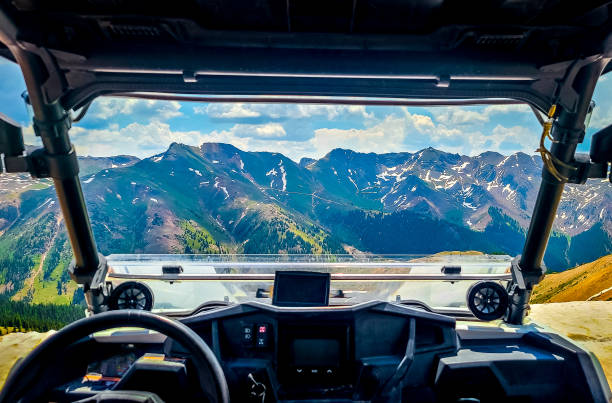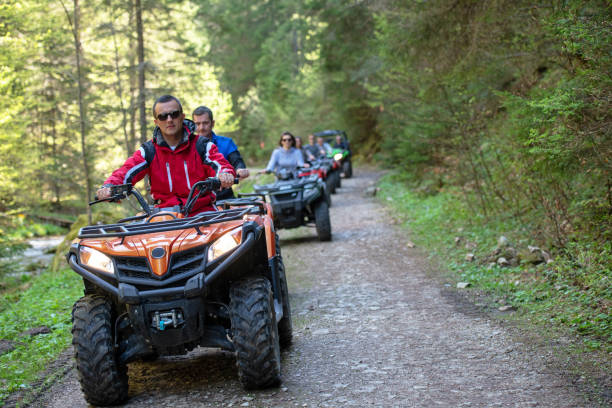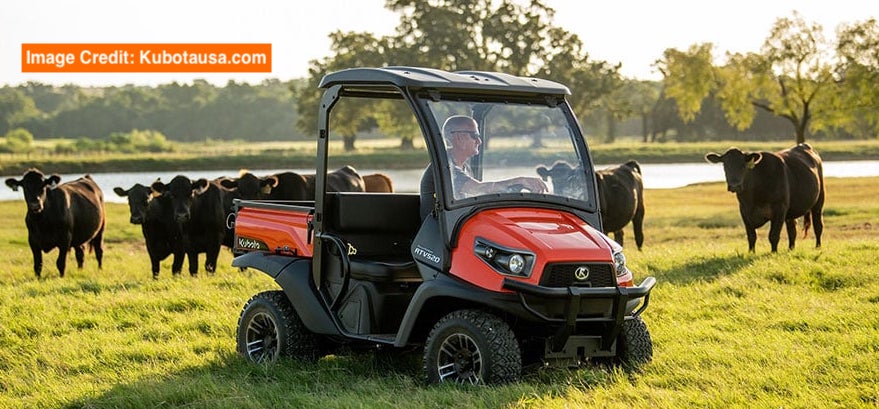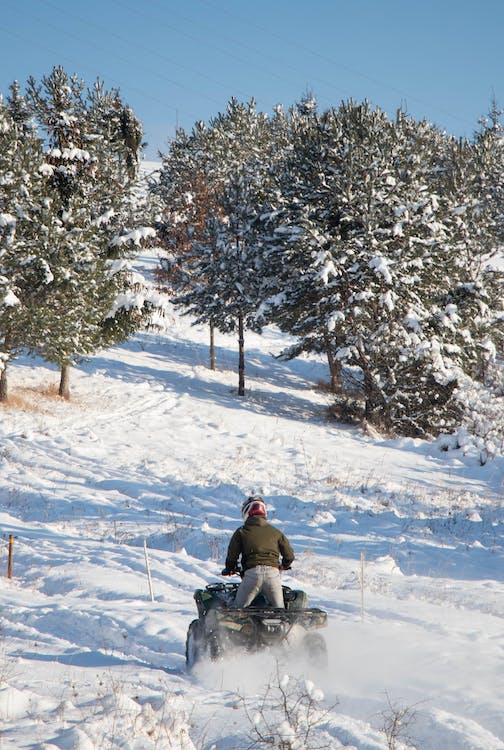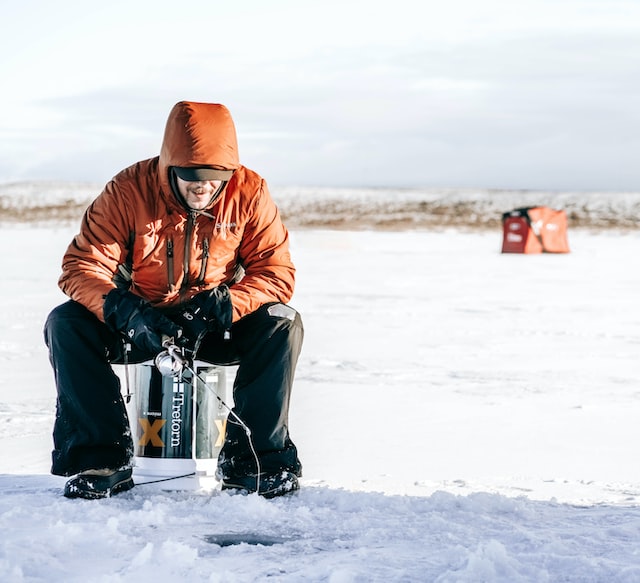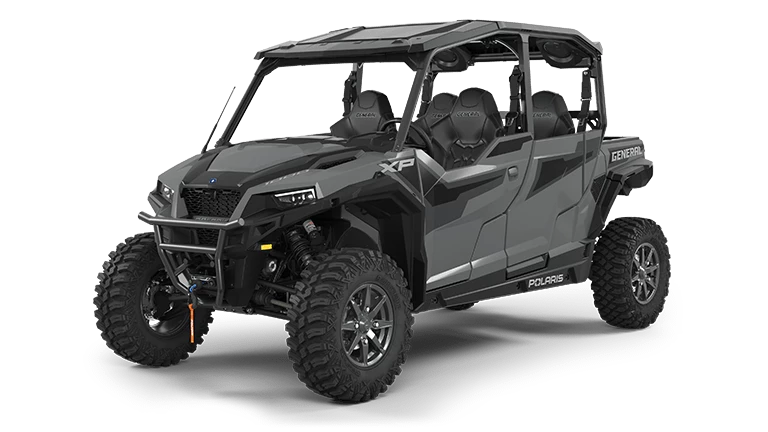As an Amazon Associate I may earn a commission from qualifying purchases at no additional cost to you.
Navigating the world of ATV and Side by Side vehicle usage can be complex, especially when considering the necessary safety certifications and licensing requirements.
For those operating ATVs, specific safety courses are often mandated to ensure that riders understand essential protocols and handling techniques. These courses aim to minimize risks and promote responsible riding practices.

On the other hand, Side by Side vehicles, which are often used for recreational and utility purposes, may have different licensing requirements.
It’s crucial for operators to understand these distinctions to ensure compliance with regional laws and regulations. A Side by Side license might be required depending on the jurisdiction, highlighting the importance of verifying local mandates before hitting the trails.
Understanding the differences between ATVs and Side by Side vehicles in terms of safety and licensing can help users make informed decisions. By familiarizing themselves with these requirements, enthusiasts and professionals alike can enjoy their vehicles safely and legally.
Understanding ATVs and Side by Sides
ATVs and Side by Sides serve different purposes in the realm of Off-Highway Vehicles, each with unique functionalities and requirements. These vehicles vary in terrain adaptability and legal mandates, impacting their usage and certification processes.
Definition and Key Differences
ATVs, or All-Terrain Vehicles, are typically single-rider machines, although some models allow an additional passenger. They are designed with handlebars and a straddle seat, resembling a motorcycle, and offer maneuverability on various off-road tracks.
Side by Sides, also known as Utility Terrain Vehicles (UTVs), resemble small cars and can seat two to six passengers. They provide seat belts, steering wheels, and are more stable due to their wider wheelbase. Unlike ATVs, side by sides generally require a specific driver’s license in some regions, aligning them closer to standard road vehicles in terms of regulatory requirements.
Common Usage and Terrain Types
ATVs are frequently used on narrow, rugged trails, often referred to as ATV Trails. These vehicles excel on tight paths, rough terrains, and are apt for recreational activities like racing and trail riding.
Side by Sides are preferred for utility purposes, such as farming or hunting trips. Their sturdy build makes them ideal for pulling gear and navigating wider dirt roads. Trails suited for side by sides typically include open fields and expansive terrains where stability and capacity for passengers or cargo are valued.
Legal Framework for Operation

The operation of ATVs and Side by Sides is governed by a specific legal framework that includes course mandates, licensing requirements, and regulations for both private and public use. Age restrictions and insurance considerations play a significant role in safely navigating these requirements.
ATV Course Mandates
ATV riding often requires completion of a safety course, depending on the local authority and specific region regulations. The mandate for these courses aims to ensure operators understand the fundamental skills and safety precautions necessary for operation.
Motor vehicle safety standards dictate key course elements such as emergency braking and navigating varied terrains. Liability insurance may be impacted by the successful completion of a certified course, offering potential reductions in premiums.
Local laws also dictate course availability and frequency. Participants often receive a certificate upon completion, which might be required for legal operation. States and provinces maintain databases to confirm compliance and provide resources for finding approved courses.
Side by Side Licensing Requirements
Side by Side vehicles can require specific licensing conditions distinct from regular motor vehicle licenses. Local authorities may impose additional tests focusing on off-road operation skills, as these vehicles often handle differently compared to traditional road vehicles.
Applicants must demonstrate proficiency in handling and safety before being licensed. The licensing process might also involve written exams that cover relevant laws and safety protocols. The goal is to ensure the operator’s readiness to manage the vehicle responsibly.
Certain regions require operators to carry additional liability insurance specifically for Side by Sides. This ensures financial coverage in case of accidents. The insurance terms often vary based on age, driving history, and the intended use of the vehicle.
Regulations on Private Land and Public Roads
The legality of operating ATVs and Side by Sides can differ significantly between private land and public roads. Often, ATVs are restricted to specific, designated trails or private property, as local regulations may prohibit them from public highways.
On private land, operators often have more leeway; however, local authorities may still enforce standards for noise and environmental impact. Public road use is frequently more controlled, requiring lights, signals, and registration similar to traditional motor vehicles.
Obeying these legalities is crucial to avoiding fines or legal repercussions. Some areas offer mixed-use trails where both ATV and Side by Side vehicles share space with traditional vehicles. Proper signage and adherence to posted speed limits are mandatory in these zones.
Youth Operation and Age Restrictions
Operation of ATVs by youth is subject to stringent age restrictions, which vary by region. Many places enforce minimum age requirements, often around 16 years, although younger riders might be allowed under adult supervision.
Safety courses are a prerequisite for youth operation in many jurisdictions. Often, restrictions exist on engine size and vehicle capacity for young operators to ensure safe handling. For these age groups, having a parent or guardian present during operation may be legally required.
Authorities emphasize training and educational programs to reinforce safety from an early age. Establishing a culture of safety around these recreational activities helps in reducing incident rates, ensuring a positive experience for all participants.
Safety Best Practices

Safety on ATVs and Side by Sides is crucial. Essential gear like helmets and gloves can significantly reduce injury risks. Proper riding techniques and understanding manufacturer guidelines enhance safety for all riders.
Essential Safety Gear
Wearing the right gear is vital when operating ATVs and Side by Sides. Helmets are the most important safety item, reducing the risk of head injuries. A well-fitted helmet should be snug yet comfortable.
Goggles shield eyes from dirt and debris. Clear vision is crucial for safe navigation. Goggles should fit over the helmet and remain securely in place.
Gloves and boots provide better grip and protection. Sturdy boots prevent foot injuries and enhance stability during rides. Gloves protect hands and improve handling control, essential for maintaining grip in wet or rough conditions.
Safe Riding Techniques
Riding techniques are fundamental to ATV and Side by Side safety. Riders should follow manufacturer guidelines regarding speed limits and terrain suitability. Understanding the vehicle’s capabilities and limits can prevent accidents.
Proper body positioning aids control. Leaning forward when climbing hills and shifting weight to maintain balance while turning is critical. Riders should practice these techniques regularly.
Maintain a safe distance from other riders. This prevents collisions and allows for reaction time if someone stops or changes direction suddenly. Stay alert and practice defensive driving, always anticipating potential obstacles.
Registration and Insurance
Registration and insurance are crucial components for ATV and side by side vehicle owners. Understanding these requirements not only complies with the law but also provides peace of mind and financial protection.
ATV Registration Procedure
ATV registration varies by jurisdiction, with specific documents often required. Owners must typically submit proof of ownership, such as a bill of sale or title, and a valid identification.
Fees are usually part of the process, reflecting vehicle type and local regulations. Some areas may also require a vehicle inspection to ensure compliance with safety standards.
Proper registration ensures legal operation of ATVs on public lands, enhancing safety and adherence to local traffic laws. It may also serve as proof of ownership, which can be crucial in cases of theft or disputes over the vehicle’s history.
Insurance Policies and Coverage
Insurance for ATVs can include several types of coverage, such as liability, collision, and comprehensive.
Liability insurance is typically the minimum requirement and covers damages if the policyholder is at fault in an accident.
Collision insurance addresses damage to the ATV itself, while comprehensive coverage deals with non-accident-related incidents like theft or vandalism.
Selecting the right insurance policy depends on usage patterns and risk factors. Owners should evaluate their needs and explore additional options like uninsured motorist protection and medical payments coverage. This provides a balanced safeguard against potential financial liabilities, ensuring safe and worry-free enjoyment of the vehicle.
Environmental Considerations
When it comes to operating ATVs and Side by Side vehicles, the environmental impact is a significant consideration. These vehicles, designed for off-road use, can affect natural landscapes and ecosystems. Responsible riding practices help minimize disturbances to wildlife and vegetation.
Trails designated for these vehicles play a crucial role in reducing environmental damage. Well-maintained trails prevent undue erosion and land degradation. Riders should adhere strictly to marked paths to minimize their impact on the environment, protecting sensitive areas from potential harm.
Emission standards are another important aspect. Newer models comply with regulations aimed at reducing air pollution. It’s essential for operators to maintain their vehicles properly, ensuring exhaust systems function efficiently to reduce air quality effects.
List of environmentally responsible practices:
- Stick to designated trails.
- Regular vehicle maintenance.
- Adhering to speed limits.
By following these practices, riders contribute to conserving nature while enjoying their activities.
Community and Support
Connecting with fellow riders is a crucial aspect of safe ATV operation. Structured environments like clubs and associations offer immense value. They help individuals develop responsible riding habits and provide support networks that share insights into local regulations and techniques.
ATV Clubs and Associations
ATV clubs provide an organized platform for enthusiasts to share experiences and knowledge.
These clubs often hold regular meetings and events, creating opportunities for riders to enhance their skills in safe, controlled environments.
Many clubs collaborate with local agencies, ensuring members stay informed about evolving safety regulations and certification needs.
Community activities are integral, promoting camaraderie and fostering a supportive atmosphere for new riders.
Through partnerships with the Commission, clubs may also offer training sessions that highlight best practices in ATV operation.
Building Responsible Riding Habits
Responsible riding involves understanding terrain challenges and environmental impacts. ATV clubs often emphasize these aspects through organized workshops.
Training programs focus on risk assessment and vehicle maintenance, essential components of responsible use.
Such initiatives promote a culture of safety, encouraging adherence to guidelines.
Mentorship within clubs further aids new riders, offering practical advice based on extensive experience.
By instilling these principles, riders can develop a sense of accountability and respect for shared outdoor spaces.
Enforcement and Compliance
In the realm of ATV courses and Side by Side licenses, compliance stands as a significant focal point.
Local authorities play a crucial role in ensuring adherence to safety regulations.
Licensing agencies often conduct regular checks to certify that vehicles and drivers meet required standards.
ATV course mandates feature robust enforcement mechanisms to ensure safety protocols are met.
This includes on-site evaluations and random inspections by authorized officers.
Local authorities utilize a combination of training sessions and educational initiatives to promote understanding and compliance.
Side by Side licenses require specific documentation.
Enforcement emphasizes maintaining up-to-date records and licenses.
Routine checks by local enforcement bodies ascertain that all vehicles are operated legally and safely.
Accidents and violations are closely monitored to enhance enforcement efficiency.
Penalties for non-compliance range from fines to suspension of licenses. In some cases, mandatory retraining is required.
Local authority collaboration with national agencies helps streamline these enforcement processes effectively.
Both ATV and Side by Side operations necessitate clear guidelines enforced through focused measures.
Active involvement by local authorities guarantees the public’s safety on paths and trails.
This comprehensive approach facilitates consistent adherence to safety mandates.
Emphasis on education and prevention serves as a cornerstone of compliance strategies.
Awareness campaigns and regular updates help keep vehicular operators informed of any changes or updates in regulatory requirements, supporting smoother enforcement and enhanced public safety.

